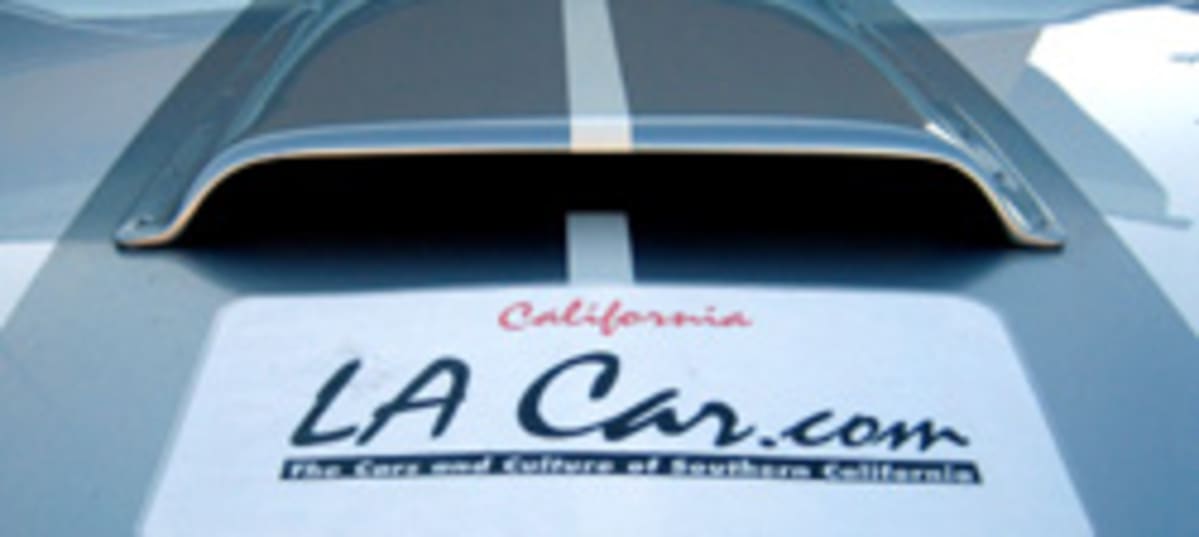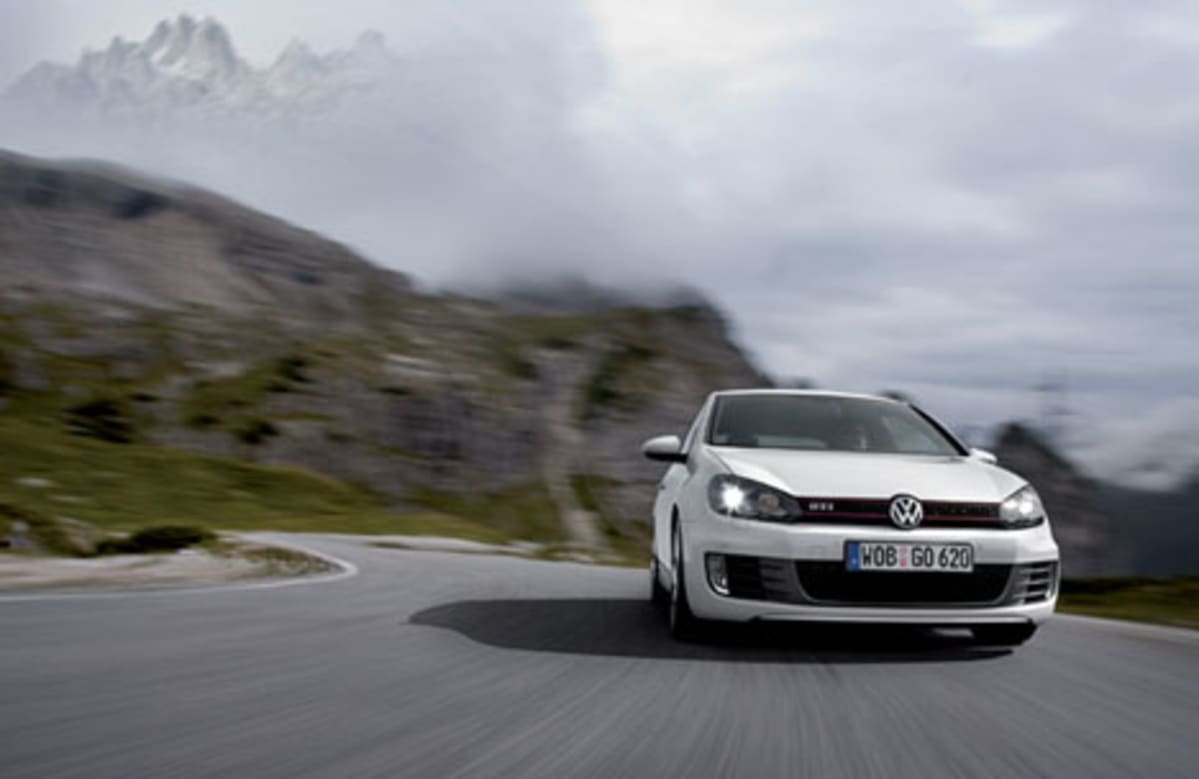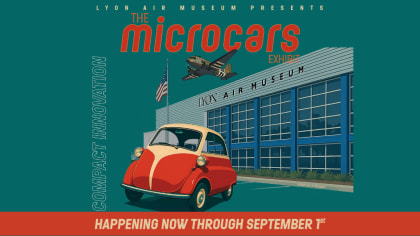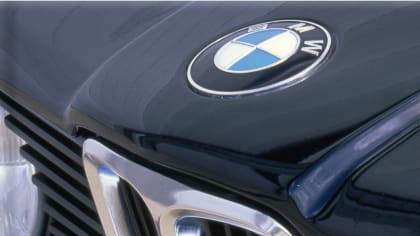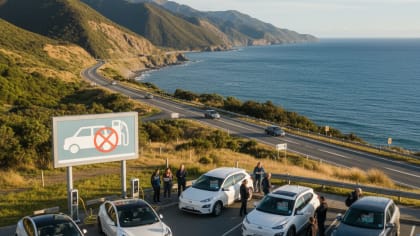BACK SEAT DRIVING - SEPTEMBER 2008
This article is from our archives and has not been updated and integrated with our "new" site yet... Even so, it's still awesome - so keep reading!
Published on Mon, Sep 1, 2008
By: The LACar Editorial Staff

Â
Subaru Impreza
NAKANO: BACK SEAT DRIVING
SUBARU: 360° AND 40 YEARS LATER
  Â

We just spent the good part of a week in an all new Subaru. These days, most of the press coverage for Subaru goes to the high-performing STi or the consumer top-rated Forester crossover. In contrast, ours was the $17,495 base model Impreza. And while no one will mistaken it for an Impreza WRX or the top-of-the-line Tribeca Limited, the base Impreza carries the same fundamental goodness that comes standard in all Subarus. That goodness includes all-wheel drive and a boxer engine - a design made famous by Porsche for its 911 model. Subaru has come a long way since Malcolm Bricklin first imported the 360 into the United States back in the late 1960s (see 360 carrying Pokemon characters to the left). The 360 was the Tata Nano of its time - arguably, the first four-wheeled microcar. Consumer Reports greeted the 360 with its infamous "not acceptable" rating because of, among other things, a lack of power. The original 16 horsepower version went all the way up to 25 before production ended. A 0-to-50 mph time of 37 seconds probably didn't help. This year marks 40 years since the introduction of the Japanese import with the star constellation logo. It's come a long way since then. For one thing, there are no underpowered Subarus. Even the cheapest Subaru (or test vehicle), comes with a 2.5-liter boxer four that cranks out 170 horsepower and 170 pound-feet of torque. Today, it's the vehicle of choice in the mountain cities across North America (every Subaru sold here has all-wheel drive). And what does Consumer Reports now say? It says Subaru is one one the three most reliable brands on the market. That's a 360 degree turnaround. Â Â Â
Â
Â
Â
NAKANO: BACK SEAT DRIVING
VW REVEALS A NEW GTI
  Â
Volkswagen released photographs of its Golf VI GTI Studie in advance of the
Paris Auto Show next week. Technically, it's a concept car, but most pundants
are betting that it's almost a mirror twin of the 2010 GTI, anticipated for sale
in the USA in late 2009.
Exterior changes include a new front end that follows in the footsteps of the
new Scirroco, and fog lamps and dual exhaust tips located at the far corners of
the car. The Stude carries over the familiar 5-spoke wheel design, although this
might change for the production model.
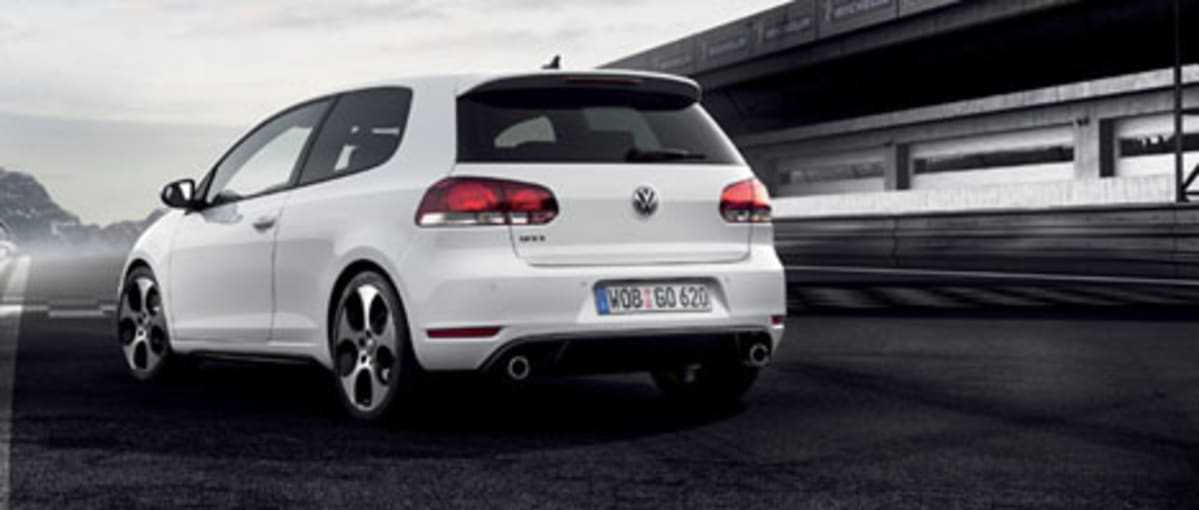
The Studie has a 22mm (.8 inch) lower stance than the current model, and
horsepower climbes to 210 horsepower. Vehicle Dynamic Control (VDC), which
varies the shock absorber damping and compression rates electronically, is said
to be available as an option on the German-spec cars.
Inside, there's a whole new dash, doors, shift knob, and bright trim accents.
The plaid cloth inserts that have also been revised. Alas, VW's trademark violet
blue gauges have been replaced by bright white gauges.

  Â
Â
Â
Â
Â
NAKANO: BACK SEAT DRIVING FREE CELL PHONE HEADSETS TO THOSE TICKETED    (San Francisco, California) - Laws banning cell phone usage while driving exist in Connecticut, New Jersey, New York and the District of Columbia have been in effect for some time, and their success at reducing the accident rates related to cell phone use has prompted adoption of similar legislation in California and Washington. In a bid to highlight these new laws, and to encourage people to change their driving behavior, Headsets.com, an online retailer of telephone headsets will offer a free cell phone headset to anyone who sends them a copy of their traffic citation for making calls while driving. Studies by the Harvard Center for Risk Analysis have shown that 2,600 people are killed, and as many as 330,000 people are injured each year in the United States, in accidents related to driver distraction from using a cell phone. "I just feel compelled to try and do something about this tragedy," says Headsets.com President and CEO Mike Faith. "If you put a 20-year-old driver behind the wheel with a cell phone in their hand, their reaction times are the same as a 70-year-old driver who is not using a cell phone" says David Strayer, Professor of Psychology at the University of Utah. Simulations have shown that drivers talking on cell phones were 18 percent slower to react to warning signs such as brake lights, while driving and talking on their cell, and took up to 17 percent times longer to regain speed after braking, slowing down all road users. "We'd rather that people didn't take calls while driving, hands-free or not," says Faith. "There's just no way you can chat on the phone and keep the same attention on the road." Faith notes however that the reality of the situation is that people will continue to do it, and he hopes this program will help those that are finding it difficult to change, to at least take a step in the right direction by switching to a hands-free system. "Of course, we encourage everyone to pull over if they have to make or receive a call - it's the only way to be really safe." The company website has been updated to cope with the expected influx of applicants to the program as new laws come into effect and a special toll free number has been set up, 1-800-HEADSETS for those that wish to start their free headset claim over the phone. For more information go to: Headsets.com/drivers  Â
Â
Â
Â
Â
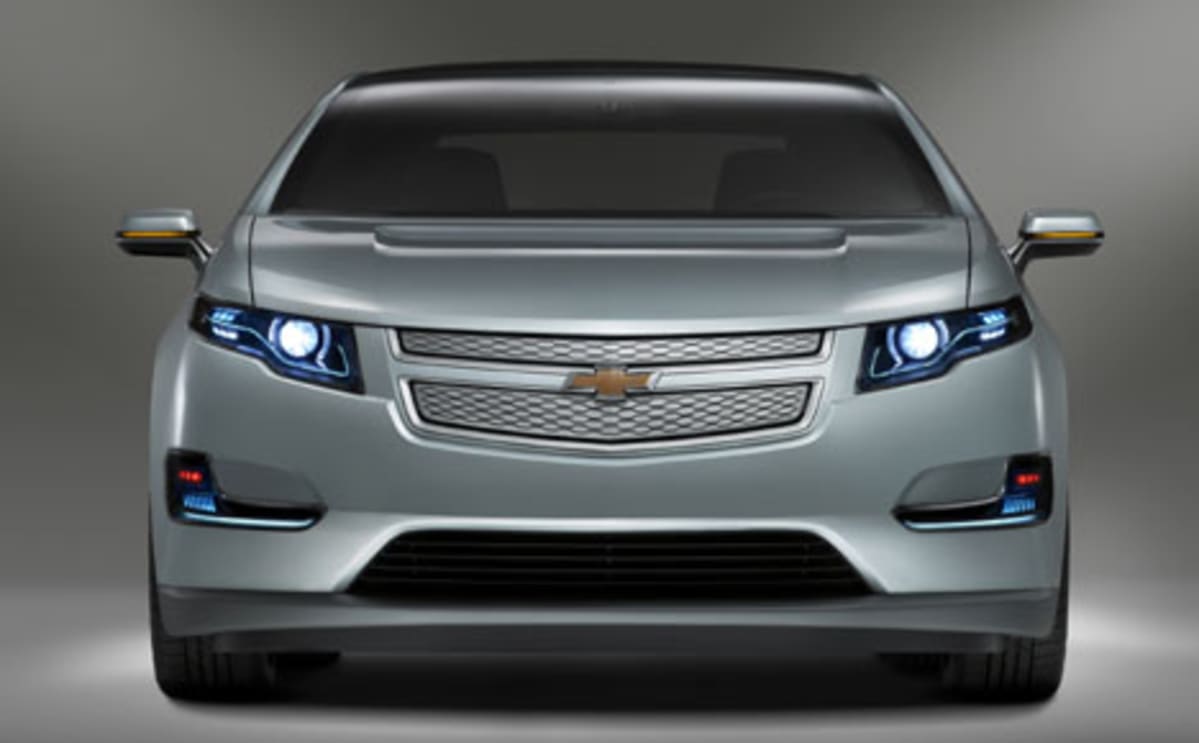
NAKANO: BACK SEAT DRIVING
FOR ITS 100TH BIRTHDAY, GM INTRODUCES THE PRODUCTION VOLT
  Â
DETROIT - General Motors launched its next 100 years today by unveiling the
much-anticipated production version of the Chevrolet Volt - a vehicle that
delivers up to 40 miles of gasoline- and emissions-free electric driving, with
the extended-range capability of hundreds of additional miles.
"Revealing the production version of the Chevy Volt is a great way to open our
second century," said Rick Wagoner, GM Chairman and CEO. "The Volt is symbolic
of GM's strong commitment to the future ... just the kind of technology
innovation that our industry needs to respond to today's and tomorrow's energy
and environmental challenges."
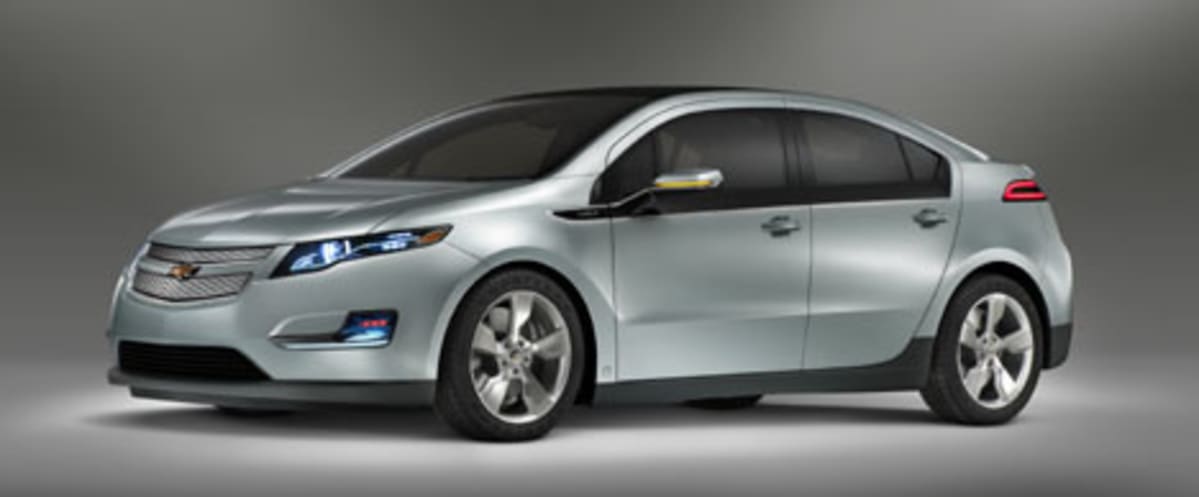
Form follows function
The design of the Chevrolet Volt production car has evolved from the original
concept that was unveiled at the 2007 North American International Auto Show in
Detroit.
Because aerodynamics plays a key role in maximizing driving range, GM designers
created an aerodynamically efficient design for the production vehicle. Many of
the design cues from the concept vehicle endure in the production Volt,
including the closed front grille, athletic stance, rear design graphics,
outside rearview mirrors and more. The Volt's rounded and flush front fascia,
tapered corners and grille are functional, enabling air to move easily around
the car. In the rear, sharp edges and a carefully designed spoiler allow the air
to flow off and away quickly. An aggressive rake on the windshield and back
glass help reduce turbulence and drag.
Working closely with GM aerodynamicists to shape the Volt, design and
engineering teams developed one of the most aerodynamic vehicles in GM's
history. They spent hundreds of hours with the Volt in GM's wind tunnel, testing
and re-testing parts such as the front and rear quarter panels, rear spoiler,
rockers and side mirrors. Aerodynamic improvements enabled GM to reach the
Volt's target of driving up to 40 miles (based on EPA city cycle) without using
gasoline or producing emissions.
Inside, the Volt offers the space, comfort, convenience and safety features that
customers expect in a four-passenger sedan, and it delivers them in a variety of
interior color, lighting and trim options unlike any offered before on a
Chevrolet sedan. Modern controls and attractive materials, two informational
displays, and a touch-sensitive infotainment center with integrated shifter
distinguish the Volt's interior from other vehicles in the market.
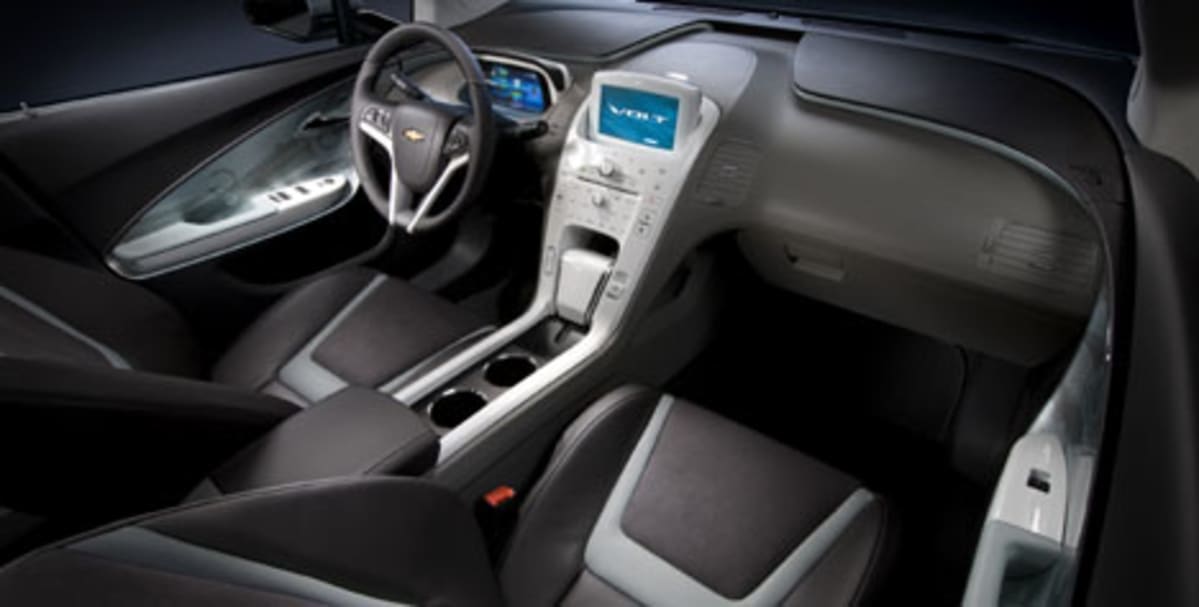
Some of Volt's interior technological features include:
- Driver-configurable, liquid crystal instrument display
- Standard seven-inch touch screen vehicle information display
- Touch screen-style climate and infotainment controls
- Optional navigation system with onboard hard drive for maps and music storage
- Standard Bluetooth for cellular phone and USB/Bluetooth for music streaming
- New era in automotive transportation
- The Chevrolet Volt is leading a new era of electrification of the automobile by creating a new class of vehicle known as the Extended-Range Electric Vehicle, or E-REV.
The Volt uses electricity to move the wheels at all times and speeds. For trips
up to 40 miles, the Volt is powered only by electricity stored in its 16-kWh,
lithium-ion battery. When the battery's energy is depleted, a
gasoline/E85-powered engine generator seamlessly provides electricity to power
the Volt's electric drive unit while simultaneously sustaining the charge of the
battery. This mode of operation extends the range of the Volt for several
hundred additional miles, until the vehicle's battery can be charged. Unlike a
conventional battery-electric vehicle, the Volt eliminates "range anxiety,"
giving the confidence and peace of mind that the driver will not be stranded by
a depleted battery.
The Chevrolet Volt can be plugged either into a standard household 120v outlet
or use 240v for charging. The vehicle's intelligent charging technology enables
the Volt's battery to be charged in less than three hours on a 240v outlet or
about eight hours on a 120v outlet. Charge times are reduced if the battery has
not been fully depleted. At a cost of about 80 cents per day (10 cents per kWh)
for a full charge that will deliver up to 40 miles of electric driving, GM
estimates that the Volt will be less expensive to recharge than purchasing a cup
of your favorite coffee. Charging the Volt about once daily will consume less
electric energy annually than the average home's refrigerator and freezer units.
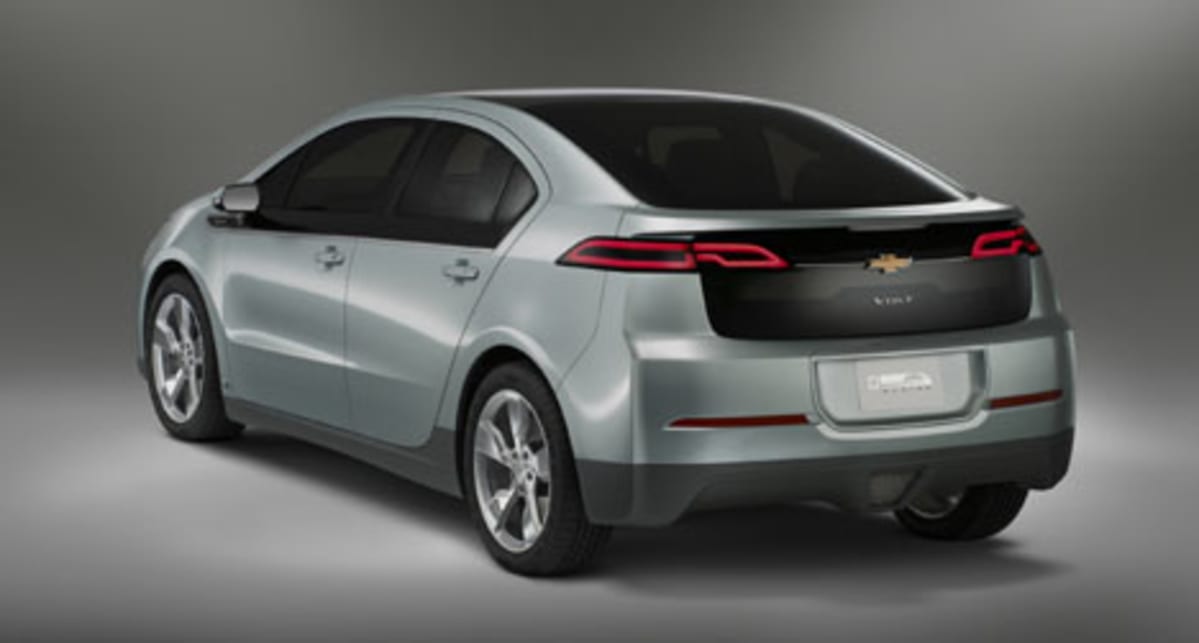
Charge out of driving
The Chevrolet Volt offers spirited driving performance in a remarkably quiet
interior. More than 220 lithium-ion cells contained within the Volt's battery
pack provide ample power. The Volt's electric drive unit delivers the equivalent
of 150 horsepower, 273 lb-ft. (370 Nm) of instant torque, and a top speed of 100
miles per hour. The lack of engine noise, combined with special sound-deadening
materials, make the Chevrolet Volt an extremely quiet vehicle to drive.
GM estimates that the Volt will cost about two cents per mile to drive while
under battery power compared to 12 cents per mile using gasoline priced at $3.60
per gallon. For an average driver who drives 40 miles per day (or 15,000 miles
per year), this amounts to a cost savings of $1,500 annually. Using peak
electric rates, GM estimates that an electrically driven mile in a Chevy Volt
will be about one-sixth of the cost of a conventional gasoline-powered vehicle.
The cost savings are even greater when charging during off-peak hours, when
electric rates are cheaper.
The Chevrolet Volt is expected to be built at GM's Detroit-Hamtramck
manufacturing facility, subject to GM successfully negotiating satisfactory
government incentives. Production is scheduled to begin late 2010 for models in
the United States. Pricing has not been announced. Visit media.gm.com/volt for
more information.
Founded in 1908, GM today employs about 266,000 people around the world. With
global headquarters in Detroit, GM manufactures its cars and trucks in 35
countries. In 2007, nearly 9.37 million GM cars and trucks were sold globally
under the following brands: Buick, Cadillac, Chevrolet, GMC, GM Daewoo, Holden,
HUMMER, Opel, Pontiac, Saab, Saturn, Vauxhall and Wuling. GM's OnStar subsidiary
is the industry leader in vehicle safety, security and information services.
More information on GM can be found at www.gm.com.
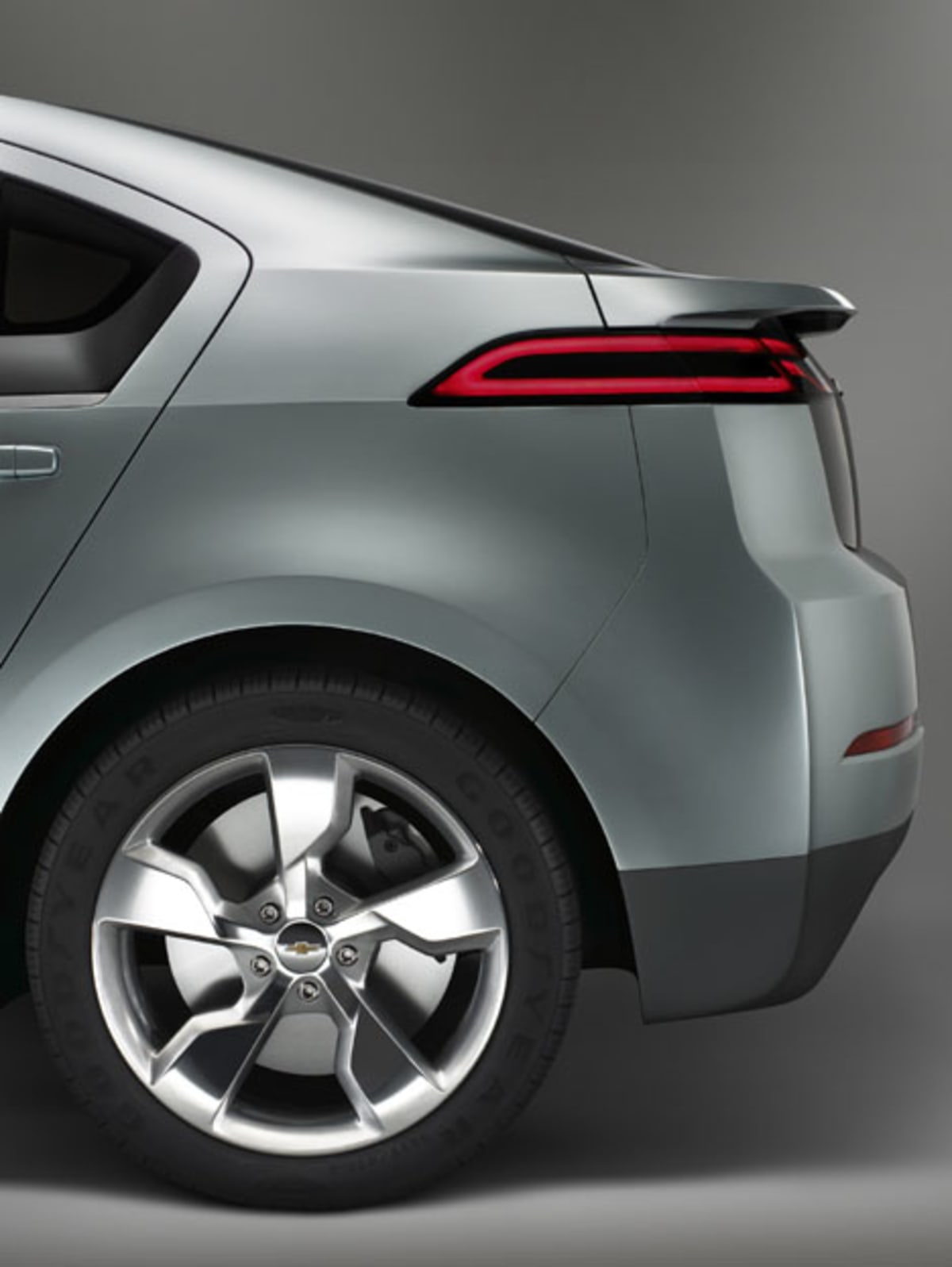
PRELIMINARY SPECIFICATIONS: 2011 CHEVROLET VOLT GeneralVehicle type: 5-door, front-wheel-drive sedan Category: Extended-Range Electric Vehicle (E-REV) Chassis: Independent McPherson struts front, compound crank twist axle rear, four-wheel disc brakes, full regenerative brakes to maximize energy capture, electric power-assist steering Seating capacity: four Manufacturing location: Detroit-Hamtramck Assembly (subject to GM successfully negotiating satisfactory government incentives) Performance Top speed (mph): 100 EV range, city (miles): 40 (based on EPA city cycle) Dimensions Wheelbase (in / mm): 105.7 / 2685 Length (in / mm): 177 / 4404 Width (in / mm): 70.8 / 1798 Height (in / mm): 56.3 / 1430 Cargo volume (cu ft / L): 10.6 / 301 Battery systemType: lithium-ion Energy (kWh): 16 Â Â
Â
Â
Â
Â
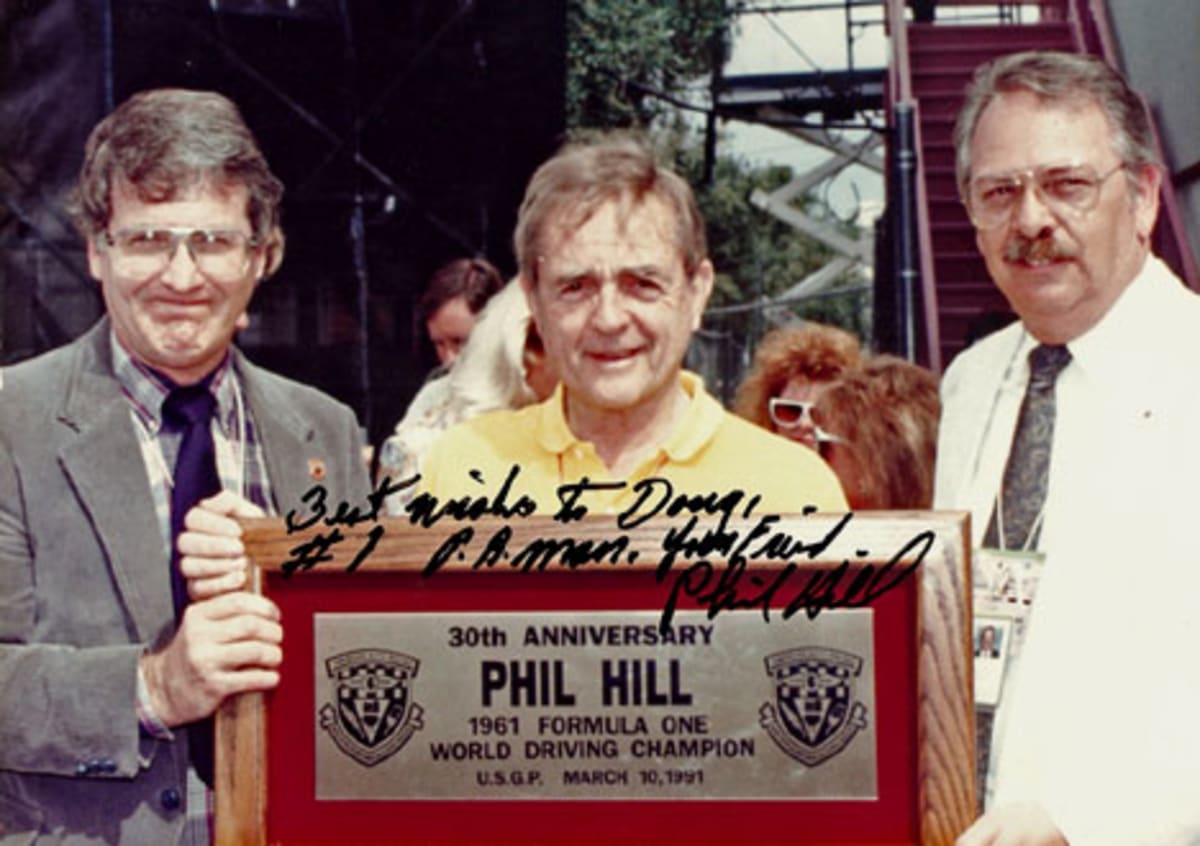
STOKES: BACK SEAT DRIVING Â Â Â Again, and simply because of circumstances of my working life, I have had the honor of meeting many great heroes of the motorsports world. Phil Hill was one of them, and surely one of the very best ever. He was "our" driver in Europe, He was the first of my era to pack up and leave the familiar comforts of the United States and to travel to Europe to compete toe-to-toe with the vaunted drivers from England and the Continent. He drove his way to the top of his sport with quiet determination and a stomach in knots. He was far from a "natural" driver, he had to work for every kilometer of speed that he picked up, and hey, could he pick 'em up. He lived what many might call a "charmed life" in racing, never getting seriously hurt, always finding ways to make the best possible use of the race car that he was in at the time, be it shitbox or supercar. If you look up the term "brutally honest" in the dictionary, you'll likely note them using a photo of Phil Hill to illustrate the term. Phil Hill could not lie to save his own life. He told you what you asked about NOT what you wanted to hear. Specious, neighborly, small talk was never in Mister Hill's playbook. He was charming but blunt. If you asked him about something that he may not have been particularly fond of, you would hear that, the exact reason for that lack of enthusiasm, and not a whole lot more on the subject. He took very little time for any sort of flattery, but was effusive with the truth. On the other hand, his enthusiasm was almost unlimited. He lit up when presented with an item or an idea that was well-conceived, well-made, honest, authentic. He was like that in every phase of his life and it must have helped as much as it hurt, because he always seemed to do well telling everyone the unvarnished truth from the fearsome Mister Ferrari to the kid serving the pasta. Good was good, but God help you if you were putting it on just for his benefit. My own Phil Hill stories are all odd little vignettes, off racetrack incidents where I was nothing more than an innocent observer, but they stay with me as tightly as any memories I have. Like sitting in the pace car at the Long Beach Grand Prix in 1976, waiting to pace the Karting demonstration race that my organization had put together with the help of Bridgestone. Without so much as a howdy-do, a rather boorish fellow had the temerity to literally shove his lady friend's face in through my passenger-side window saying, "See honey, that's Phil Hill, the former world champion." Her head out of the window and his still nearby, I grabbed his collar and drew his head into the idling Toyota Supra. I smiled and then shouted right into his goddamn ear: "He's the 1961 World Champion, not an ex!" and shoved his mug back into the crowd. Phil was sitting there with a rather bewildered look in his eye ... We never said another word about it as we were radioed off to pace the karts. As a prologue to the following scene at Phoenix, I made a visit to Hill and Vaughn, the legendary restoration shop on Glencoe Avenue in Venice. I was there to show and tell Mister Hill exactly what we planned to do at the GP so he would not be surprised, embarrassed, or overly-hyped (three things that were anathema in his world). Hill was working on a front strut from (I think) Derek's car. He had it in a vise, and was compressing the spring with a cable come-along. As we spoke, Hill continue his work, cranking the gnarly-looking device and tightening the spring. Now, I know that those springs are under a lot of tension and racking them down like Hill was doing is considered a touchy situation. With every stroke, I unconsciously took a little shuffle step back. When Hill stepped away from the vise, we were looking at each other and shouting our conversation from almost halfway the shop ... We both had a little laugh. (By the way, the cars that came out of Hill and Vaughn were nuts-on exactly the way they looked, worked, and sounded when they came out of the factory. No better, no worse ... Precisely factory stock right down to the smell. The only explanation was that the space where a Hill and Vaughn-restored car stood was somehow a rift in time. Superb.) At the 1991 Grand Prix of the United States in Phoenix a professional group that I belong to decided to recognize Hill on the occasion of the 30th anniversary of his world championship year of 1961. We got some good ink for it, and Phil actually got his "gold card" a good-any-race/go-anywhere credential that every F1 champion is suppose to be given. His was given to him (by Bernie Eccelstone) behind the pit buildings in Phoenix and witnessed by exactly one person, 30 years after his world championship. Guess who? Yup me. We had petitioned Eccelstone for the card for Phil for some time. Just as we passed each other on the walkway, Eccelstone called out: "Hey, Phil, wait a minute" reached into his pocket, pulled out Phil's lifetime card, handed it to him and skittered off. Pomp?, circumstance?, Nope nada. Again, we just sort of looked at each other without a word. But there was sweet redemption and a startling reception waiting just around the corner. We need to be out on the grid NOW and the quickest way there was through one of the pit building. But that was verboten (may not with his new pass). Anyhow Hill just turns to me and says: "Quick, through here!" The Ferrari garage, the holy of holies, the forbidden land ... About halfway through, I noted that all activities on the cars had ceased, a millisecond later I realized that every mechanic, engineer, clipboard holder, and hanger-on was converging on ... Us. They all stopped cold at about 4 feet away forming tight rings of young faces, most of whom weren't even alive when Hill won the F1 title for Maranello. They weren't coming to throw our asses out (had it been me alone, I most likely still have the bandages on), they were coming to venerate "Peel Heel" one of Ecurie Ferrari's favorite sons, a patron saint, come down from the clouds. Reverent, hushed whispers and perfect, fluent Italian (coming from Hill's lips) ... It was a magic moment that's frozen in my mind. He chatted with each who wanted to say his name and theirs to him and then softly indicated that we needed to get to the grid for his lap of honor ... The sea parted and we walked out to the most wonderful, heart-warm round of sincere applause I've ever had the pleasure of (sort of) sharing. Phil Hill was hands-on when he needed to be, and direct at all times. He was a good man, who made all of us in motorsports look good. I'll miss him terribly as will we all. - Doug Stokes Editor's Note: Phil Hill, the legendary race-car driver and the only U.S.-born driver to win the Formula One international auto-racing championship, passed away on August 28, 2008. He was 81. Â Â
Â
Â
Â
Â

NAKANO: BACK SEAT DRIVING Â Â Â Half of Young Drivers Are Driving While Texting, Says Survey Now that California requires all cell phone use while driving to be hands-free and has outright banned talking on the cell by teenagers, one would think that the roads are now safer to drive. According to a new survey by Findlaw.com, nearly half of the drivers between ages 18 and 24 say they have sent a text message, instant message or e-mail while driving - and it's still legal. The survey found that 48 percent of drivers between the ages of 18 and 24, and more than a quarter (27 percent) of drivers 25 to 34, admit to texting while behind the wheel. Seventeen percent of all adults surveyed say they have texted while driving. Not surprisingly, the incidence of "Driving While Texting" is largely a function of age. While younger, more techno-savvy drivers are more likely to be avid texters even while driving, less than two percent of those age 55 and over say they have ever sent a text message, instant message or e-mail while driving. Here's a breakdown of the results by age: 18-24 48% 25-34 27% 35-44 19% 45-54 11% 55-64 2% 65+ 1% Four states - Alaska, Minnesota, New Jersey and Washington - recently enacted laws that ban sending text messages while driving. Thirteen other states are reportedly considering similar legislation. "The potential legal implications of texting while driving go far beyond the possibility of a mere traffic violation" said Stephanie Rahlfs, an attorney at FindLaw.com. "In the case of a traffic accident, proof that the driver was texting while driving may be used to help prove liability for the accident, even in states that do not ban texting while driving." According to Rahlfs, it's conceivable that a jury could consider texting while driving as negligent or even reckless conduct. The FindLaw survey was conducted using a demographically balanced telephone survey of 1,000 American adults and has a margin of error of plus-or-minus three percent. Additional information can be found at the FindLaw.com Traffic Tickets Center: public.findlaw.com/traffic-ticket-violation-law. Â Â
Â
Â
Â
A
JOURNAL OF LOS ANGELES & ITS CAR CULTURE That
was LA Car's subtitle when it started back in 1997. It's original website
address was about five times the size of lacar.com. Since then, La Car
became LA Car. Its subtitle became
Reporting From Car Culture Ground Zero, then From The Heart of Car
Culture, to today's The Cars and Culture of Southern California. At
all times, however, we aimed to chronicle the Southland's automotive spirit - much like
one's own
journal or diary.
LA Car has always been a great source
to come back to from week-to-week, to see what articles and reviews have been
added to our rather staggering database. With Back Seat Driving, a.k.a.
BSD (note the similarity to two well-worn abbreviations, BS and BFD) and Live
Wires - Hot & Tender News From the Car Culture (co-located with Back Seat
Driving, and updated at least daily), we give you some reasons to
come back more often (all opinions, by the way, are those of the respective
author).
So, go
ahead and bookmark www.lacar.com. We'll be
sure to always provide a link to Live Wires and the latest Back Seat
Driving blog entry. In the meantime, welcome to the journal and journey from
the heart of the car culture. - Roy Nakano For
past Blog entries, click the following:
August 2008
July 2008
June 2008
May 2008
April 2008
March 2008
February 2008
January 2008
December 2007
November 2007
October 2007
September 2007
August 2007
July 2007
June 2007
May 2007
April 2007
March 2007
February 2007
January 2007
December 2006
November 2006
October 2006
September 2006
August 2006
July 2006
June 2006
May 2006
April 2006
March 2006
February 2006
January 2006
December 2005
November 2005
October 2005
September 2005
August 2005
July 2005
June 2005
May 2005
April 2005
March 2005
February 2005
January 2005
December 2004
November 2004
October 2004
September 2004
August 2004
July 2004
June 2004
May 2004
April 2004
